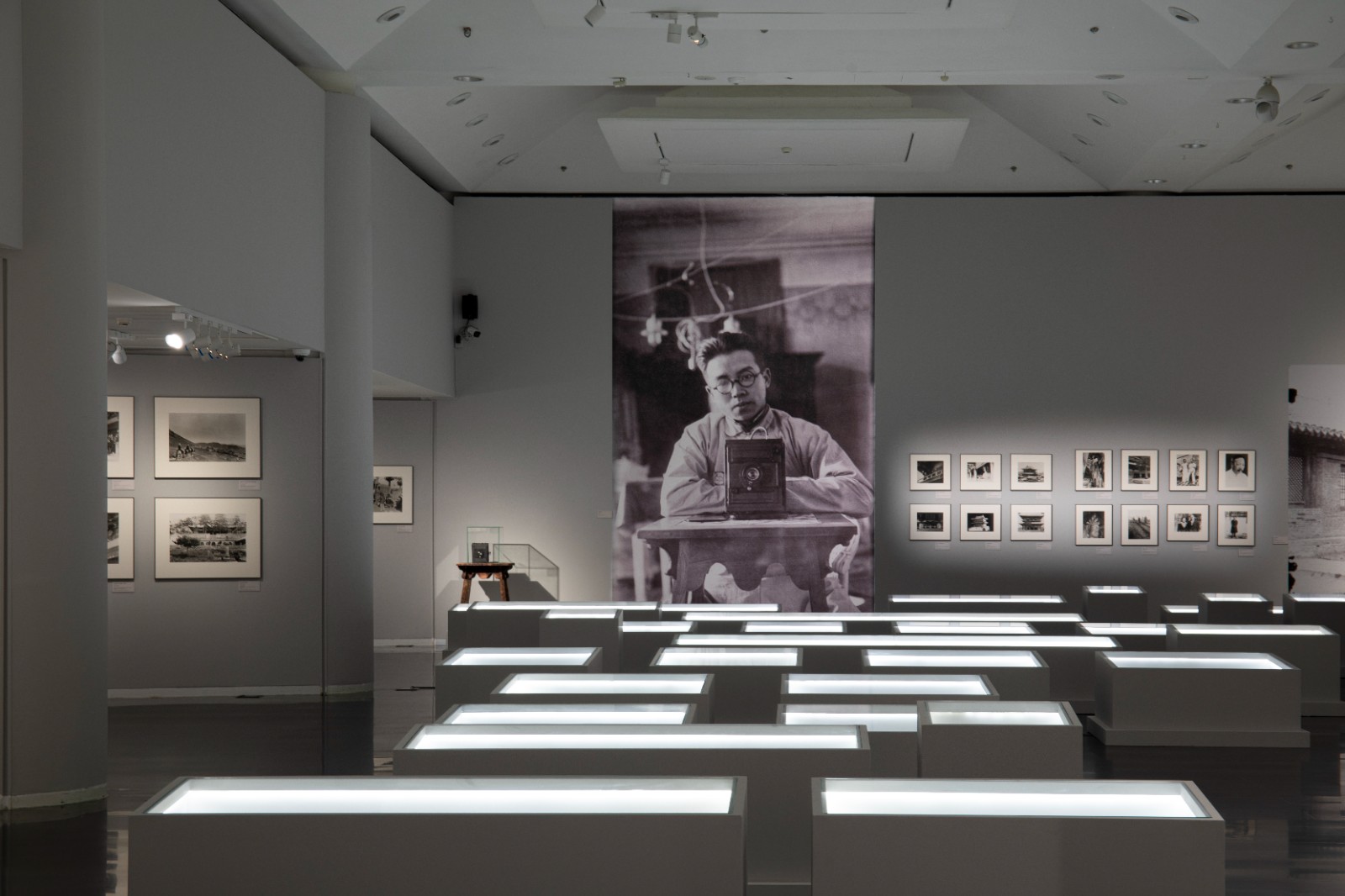 Exhibition View
Exhibition View
Liang Sicheng (April 20, 1901-January 9, 1972), a graduate of University of Pennsylvania and son of Liang Qichao, one of the most prominent Chinese scholars of the early 20th century, was a Chinese architect and architectural historian, known as the father of modern Chinese architecture. As a retrospective of Liang Sicheng commemorating his 120th anniversary, this exhibition displays a total of 362 exhibits including photos, videos, drawings, models, letters, manuscripts and space installations.
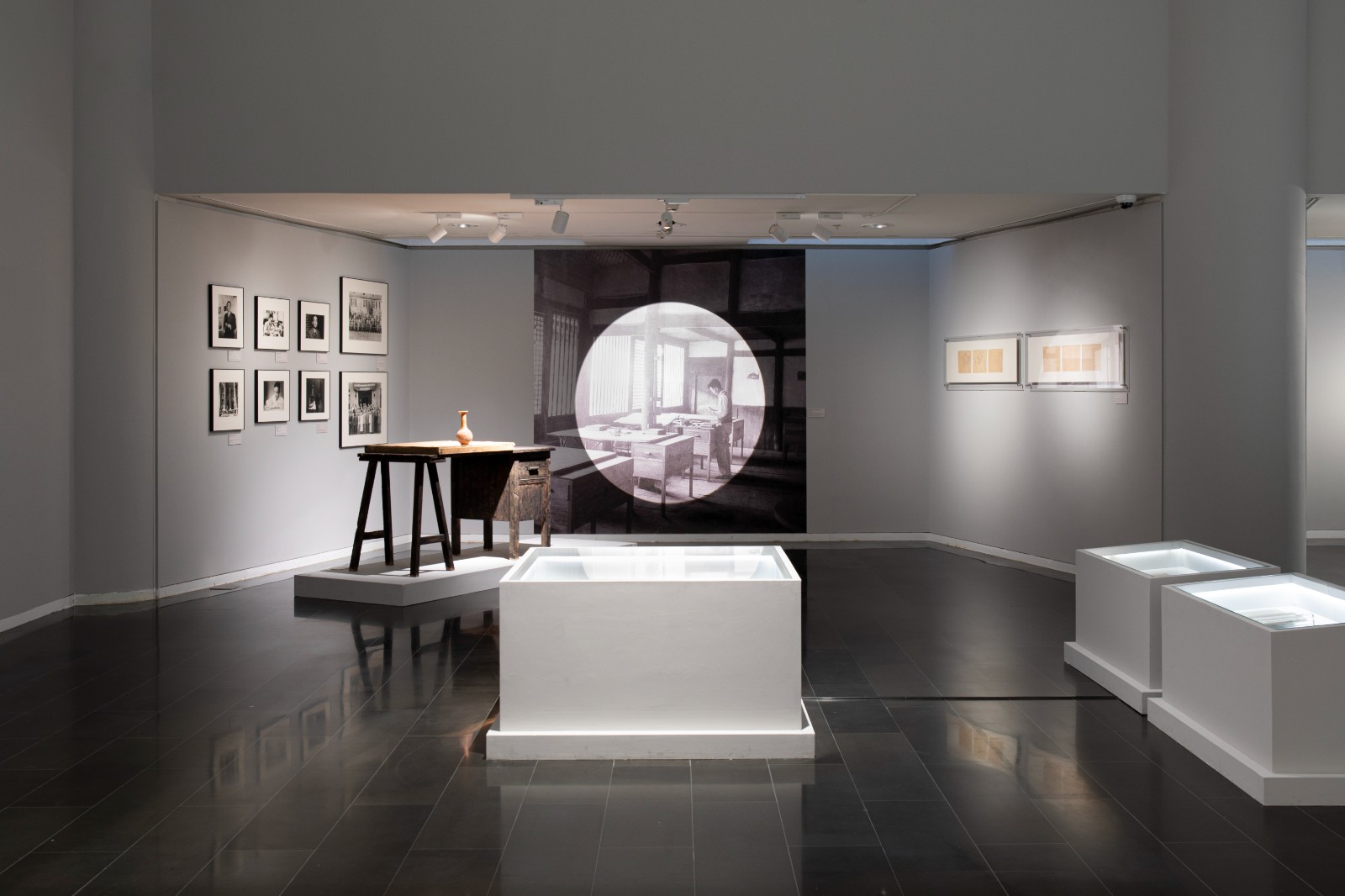 Exhibition View
Exhibition View
Also presented are some 400 sketches, manuscripts, early prints and images that are only a small part of Liang Sicheng’s works. His works and notes when piled up could fill his room, but some of them were regrettably destroyed or lost during the turbulent years. However, people can still look back to the master’s life by looking at the square table on which he used to fiddle with his camera, the round table of the University of Pennsylvania, the Cartridge paper at UPenn, and the rice paper in Li Zhuang. Through these exhibits, visitors can see how the master hummed a tune with a vase under his chin to support his head while drawing on paper.
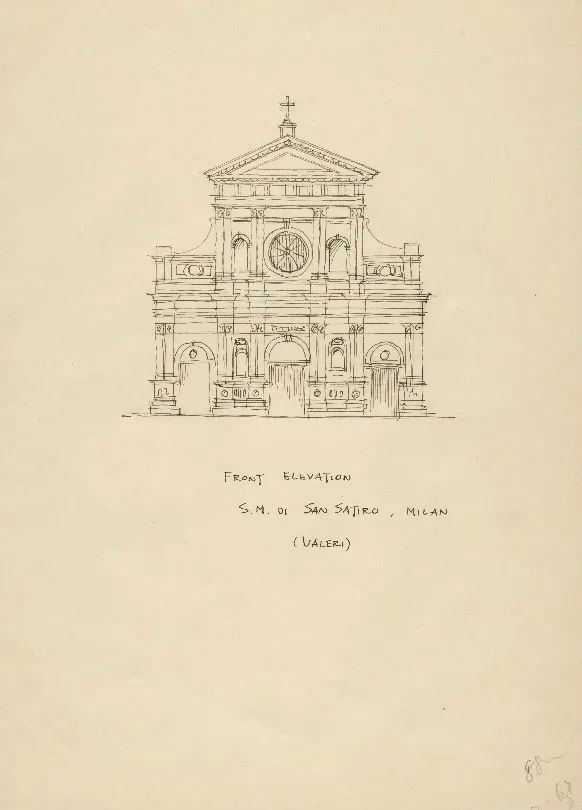
A drawing made by Liang Sicheng in 1925, during his studies at the University of Pennsylvania.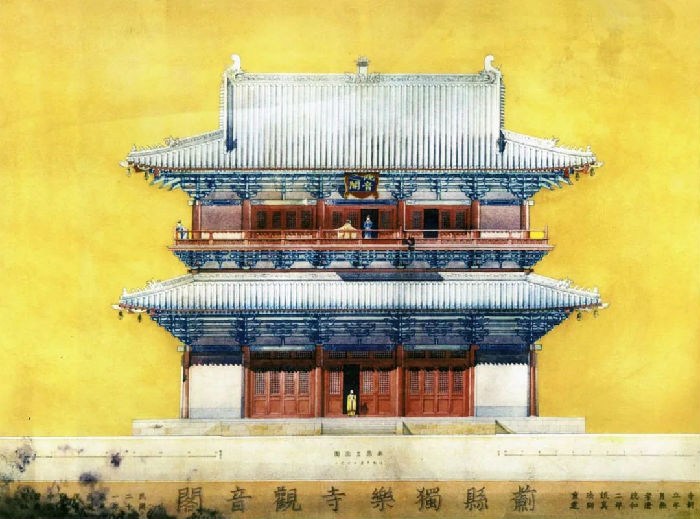 A watercolor by Liang Sicheng in 1932 which depicts the Guanyin Pavilion at Dule Temple in Jixian County.
A watercolor by Liang Sicheng in 1932 which depicts the Guanyin Pavilion at Dule Temple in Jixian County.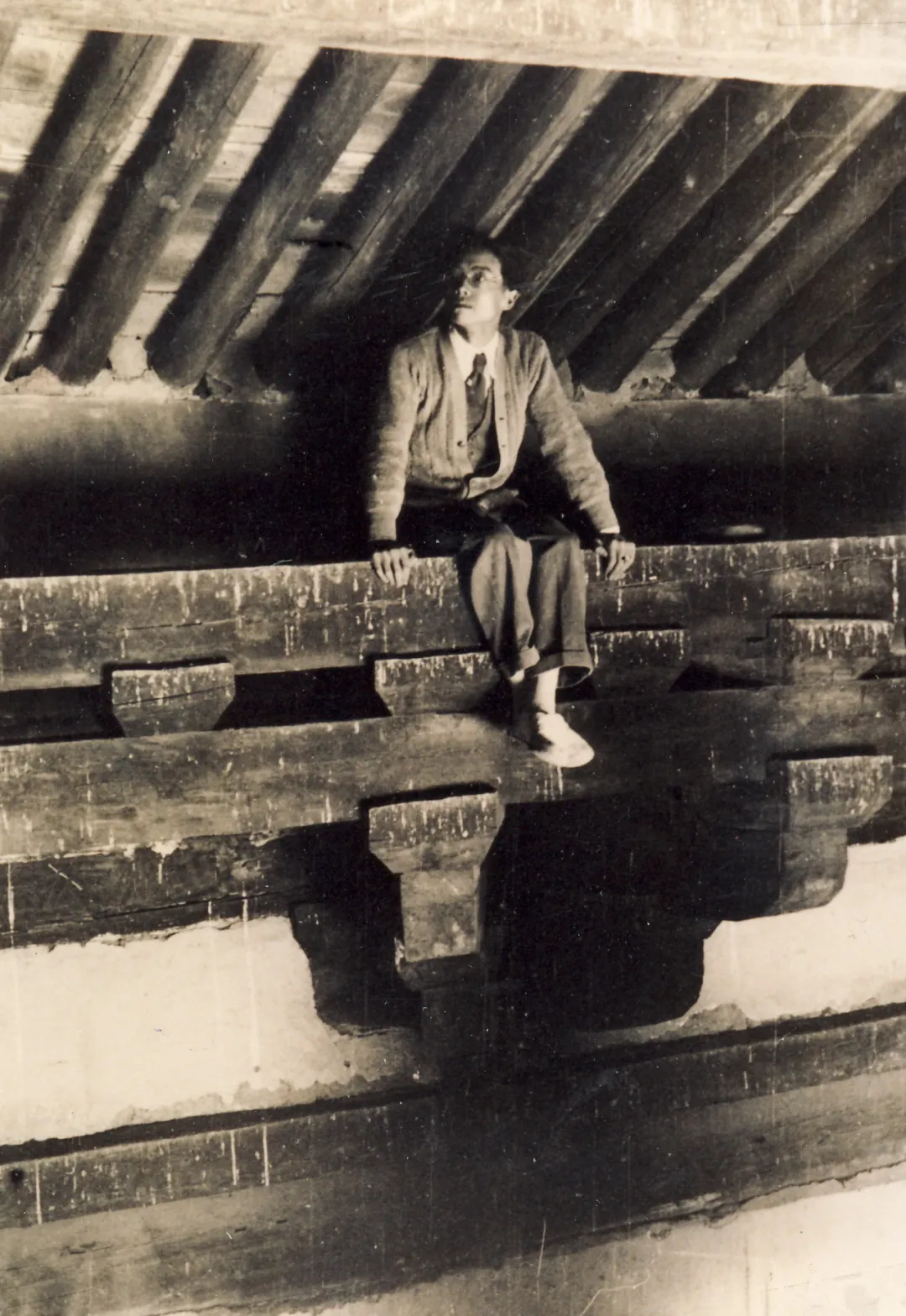 A photo taken in 1933 showing Liang Sicheng while doing surveying and mapping at Puhua Temple, in Shanxi province.
A photo taken in 1933 showing Liang Sicheng while doing surveying and mapping at Puhua Temple, in Shanxi province.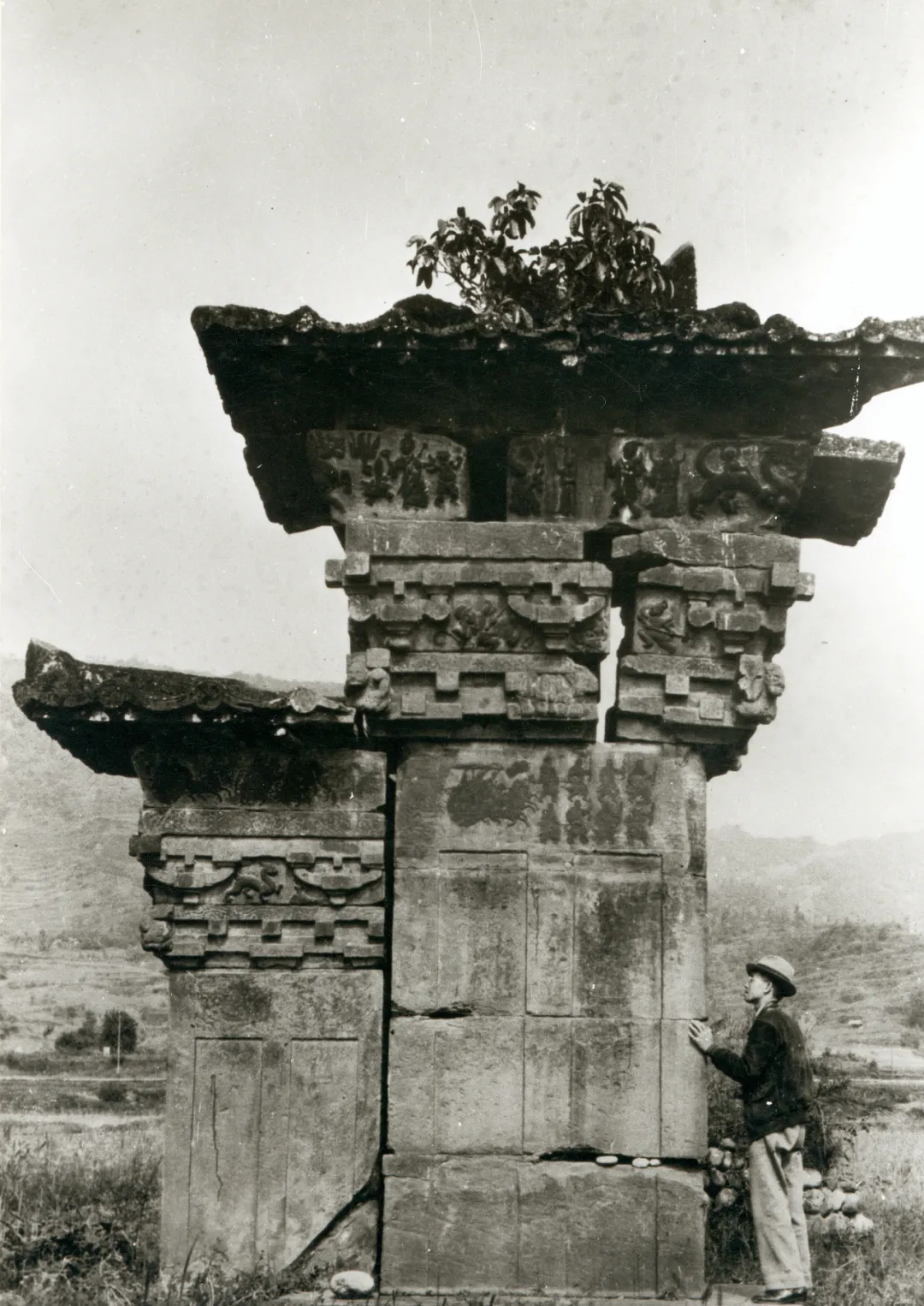 A photo taken in 1939 showing Liang Sicheng surveying Gaoyi Que, a stone-carved pillar-gate, in Sichuan province.
A photo taken in 1939 showing Liang Sicheng surveying Gaoyi Que, a stone-carved pillar-gate, in Sichuan province.
 Exhibition View
Exhibition View
Liang authored the first modern history of Chinese architecture, and was the founder of the Architecture Department of Northeastern University in 1928 and Tsinghua University in 1946. He, along with Lin Huiyin (1904–1955), Mo Zongjiang (1916–1999), and Ji Yutang (1902–c. 1960s), discovered and analyzed the first and second oldest timber structures still standing in China, located at Nanchan Temple and Foguang Temple at Wutai Mountain. He was the Chinese representative on the 11-person team that designed the United Nations Headquarters in New York City. Princeton University awarded him an honorary doctoral degree in 1947 and issued a statement praising him as “a creative architect who has also been a teacher of architectural history, a pioneer in historical research and exploration in Chinese architecture and planning, and a leader in the restoration and preservation of the priceless monuments of his country.”
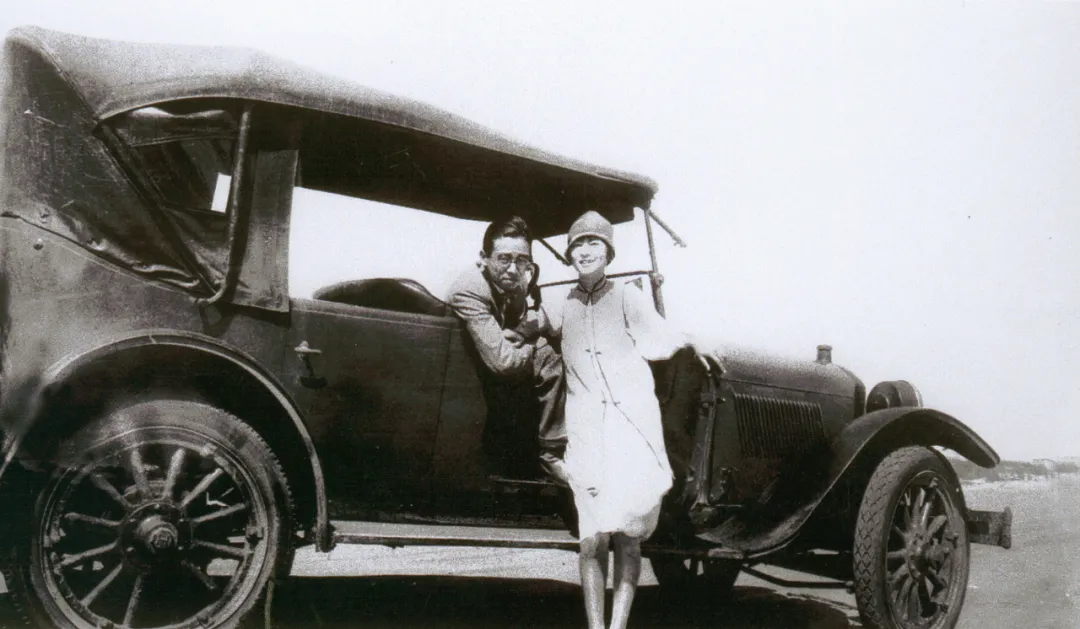 A photo taken in 1928 showing Lin Huiyin and Liang Sicheng during honeymoon in Europe.
A photo taken in 1928 showing Lin Huiyin and Liang Sicheng during honeymoon in Europe.
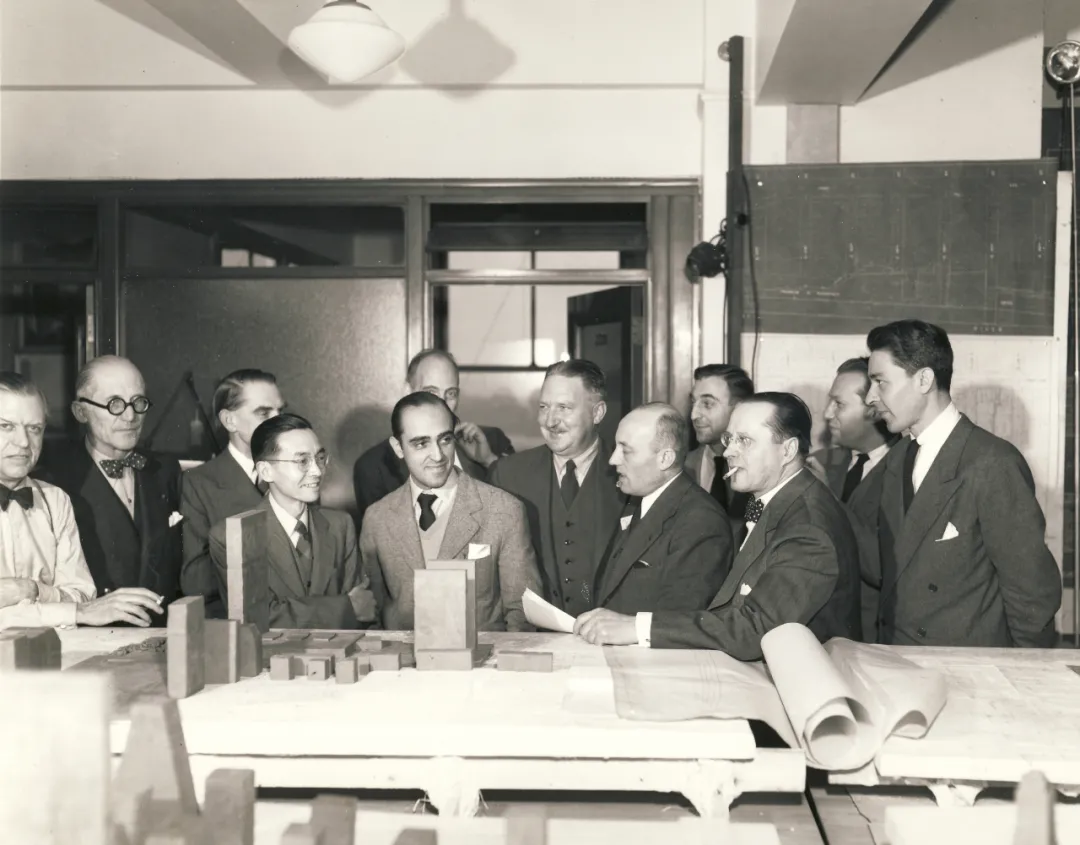 A photo taken in 1947 showing Liang Sicheng (fourth from left) as the Chinese representative in the Design Board which designed the United Nations headquarters in New York.
A photo taken in 1947 showing Liang Sicheng (fourth from left) as the Chinese representative in the Design Board which designed the United Nations headquarters in New York.
With such a deep respect for tradition and the nation’s cultural heritage, Liang had his biggest ambition: preserving Old Beijing in its entirety. In the 1950s he was named Vice-Director of the Beijing City Planning Commission. In his early recommendations for transforming Beijing into the new national capital, he insisted that the city should be a political and cultural center, not an industrial zone. He later put forward a proposal that a new administrative center for government buildings with a north-south axis be established west of the Forbidden City, far away from the Inner City. He also advocated that the city walls and gates be preserved. He even published an article entitled “Beijing: a Masterpiece of Urban Planning”, hoping to win the support of the general public.

The Chinese“Order”(English version, 1946), Collected by National Library of China
This exhibition has five sections, demonstrating Liang Sicheng’s life from a student to a scholar. He was an architect, a preserver of ancient architecture, an urban planning expert and an educator. The exhibition shows the diligence Liang Sicheng paid to be a precursor in the field of architecture, and more importantly, the incomparable joy that supported and guided him in his life.

About the exhibition
Exhibition Period: 10 August 2021 – 20 October 2021
Exhibition Venue: Exhibition Hall 7-8, Fourth Floor, Tsinghua University Art Museum
General Planner: Zhuang Weimin
Curators: Su Dan, Liu Chang, Wang Nan
Academic Consultants: Wu Liangyong, Qin Youguo, Zuo Chuan, Zhu Wenyi, Bian Lanchun
Academic Supervisors: Zhang Li, Zhang Yue
Academic Content: Wang Guixiang, Lv Zhou, Lai Delin, Jia Jun, Cheng Xiaoqing, Wu Tinghai, Yang Rui, Alexandra Harrer, Wang Qingchun, Liu Yishi, Li Luke, Chen Chi, Wang Jun, Wang Yuejin, Ding Yao, Wang Zhuonan, Lv Chenchen
Exhibition Supervisors: Su Dan, Du Pengfei, Wang Chenya
Archives Supervisors: Fan Baolong, Li Yunfeng, Dai Hong
Visual Supervisor: Wang Peng
Visual Designers: Wang Peng, Wang Meiyi
Exhibition Designers: Ma Yue, Liu Huijian
Exhibition Team: Liu Huijian, Wang Chenya, Ma Yue, Long Ruolan, Sun Yiwei, Liu Yuqing
Multimedia Designers: Zhang Jian, Yue Qi, Min Jiajian, Yu Borou
Sound Field Designer: Zhang Jian
Audio and Video Editing: Li Benpao, Fang Xitong, Meng Yutong
Literature Collation: Zhao Sarina, Yang Shu, Liu Fangyuan, Nie Hanya, Yang Xue, Li Liang, Jiang Shenwei
English Translation and Review: Alexandra Harrer, Zhu Xinrui, Zhou Shuyang, Lu Yao, Jia Zheng, Jia Simin, Zhang Jiayue, Xiong Yuxi, Suo Feiya, Gao Juncheng, Zhu Liufei, Liu Ziyu, Zhou Huishan , Luo Haijia
Administrative Affairs: Zou Liming, Long Shuyu, Sun Haidong, Ma Yanyan
Publicity Team: Li Zhe, Liu Yaomeng, Zhou Xinxin, Xiao Fei, Ye Yang, Liu Hongchun, Wang Zhihan, Xiang Linfei, Xu Ningjing
Host: Tsinghua University
Co-hosts: The Architectural Society of China, Urban Planning Society of China, Chinese Society of Landscape Architecture, Chinese Society of Cultural Relics Organizers, School of Architecture, Tsinghua University, Tsinghua University Art Museum, Archives of Tsinghua University
Co-organizers: China Engineering & Consulting Association, China Association of City Planning
Courtesy of Tsinghua University Art Museum, edited by CAFA ART INFO




























